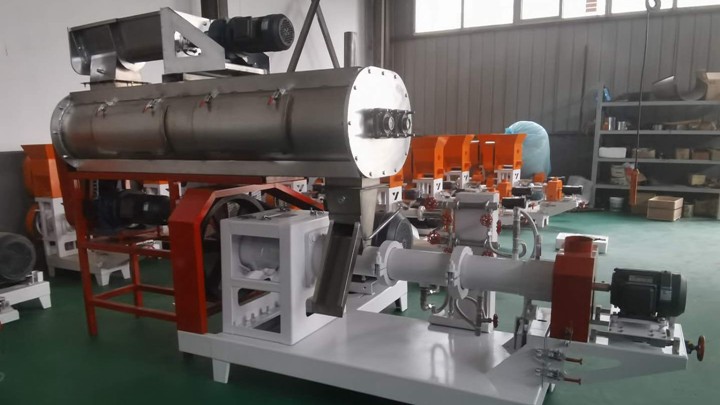.jpg)
Adults. Algae, bacteria, detritus, duckweed, other plants. Because tilapia feed on food sources that are lower on the food chain, they do not have issues with mercury concentration like higher-level predatory fish, such as swordfish, pike, halibut, and albacore. Tilapia have the potential to be a highly sustainable food resource.
.jpg)
2018-7-20·Use of Potential Plant Leaves as Ingredi ent in Fish Feed-A Review M.S. Dorothy 1 *, Sudhanshu Raman 1 , Vipin Nautiyal 1 , Khushvir Singh 2 , T. Yogananda 3 and Makamguang Kamei 4

2021-7-7·The best growth performance and feed utilisation were obtained in fish fed test diets A1 and A4 (SGR = 1.25 and 1.26% day-1; FCR = 2.37 and 2.31 respectively). Excess of lysine in test diets was ...
.jpg)
2023-2-2·Tilapia was fed three times daily (0800, 1200 and 1600 h) all the diet they could consume for thirty minutes for six weeks (Figure 5). Results & conclusions. After six weeks, final mean average weight of fish fed Diet 1 (20 per cent FM and 50.3 per cent SBM) and Diet 9 (0 per cent FM, 33.8 per cent organic soybean meal [OSBM], and 46.5 per …
.jpg)
HERAWATI et al. – Effect of Lemna minor on Oreochromis niloticus 3353 profile of feed using fermented L. minor meal as a meal for tilapia is presented in Table 6. Feeding of nile tilapia Nile ...
.jpg)
2022-4-5·8. TetraMin Tropical Medley ColorBlast Medley Of Red. Another product from TetraMin – this fish feed is packed with nutrition to promote healthy growth and development. This is one of the best fish feeds for tilapia, as it includes a blend of natural ingredients, including shrimp meal and whole eggs.

2018-7-23·Zanzibar tilapia (O. urolepis horno-rum). The scientific names of tilapia species have been revised a lot in the last 30 years, creating some confu-sion. The scientific name of the Nile tilapia has been given as Tilapia nilot-ica, Sarotherodon niloticus, and cur-rently as Oreochromis niloticus. Physical characteristics Tilapia are shaped much ...
.jpg)
Tilapia tilapinevirus (or tilapia lake virus, TiLV) is a recently emerging virus associated with a novel disease affecting and decimating tilapia populations around the world. Since its initial identification, TiLV has been reported in 17 countries, often causing mortalities as high as 90% in the affected populations. To date, no therapeutics or commercial vaccines exist …
.jpg)
2019-8-12·Adequate nutrition is critical for tilapia growth, feed efficiency, health and immune status, and flesh quality of farmed tilapia. Currently, almost 6 million metric tons (MT) of tilapia are grown annually worldwide. In a quick calculation, considering an average production cost of U.S. $0.80 per kg, and that, on average, feed represents 60 ...
.jpg)
Feeding is as follows: twice a day, two periods: 8 a.m. to 9 a.m. and 3 p.m. to 4 p.m. Catch 30 to 50 fish every 15 to 20 days to calculate the average weight to analyze the growth of tilapia fish, which helps adjust feeding speed to help the fish grow healthily. Feeding speed also depends on the fish’s diet.
.jpg)
Protein. Nile tilapia requires the same ten essential amino acids as other finfishes. Protein requirements for optimum growth are dependent on dietary protein quality/source, fish size or age and the energy contents of the diets and have been reported to vary from as high as 45-50 percent for first feeding larvae, 35-40 percent for fry and fingerlings (0.02-10 g), 30 …
.jpg)
2023-2-2·Tilapia was fed three times daily (0800, 1200 and 1600 h) all the diet they could consume for thirty minutes for six weeks (Figure 5). Results & conclusions. After six weeks, final mean average weight of fish fed Diet 1 (20 per cent FM and 50.3 per cent SBM) and Diet 9 (0 per cent FM, 33.8 per cent organic soybean meal [OSBM], and 46.5 per …

HERAWATI et al. – Effect of Lemna minor on Oreochromis niloticus 3353 profile of feed using fermented L. minor meal as a meal for tilapia is presented in Table 6. Feeding of nile tilapia Nile ...
.jpg)
2020-11-11·Fill a large container with water from the tank or pond. Place the sealed bag with the fingerlings on the surface of the container. Let the water in the bag adjust to the temperature of the tank water (about 15 minutes). Add half a cup of tank/pond water to the container every five minutes for 15 minutes.
![<h3>What Do Tilapia Eat [2022 Update] Farm Raised vs Wild</h3>](/wp-content/themes/lima/load/51/IMG_20210618_144706.jpg)
2021-12-22·Tilapia often eats worms, small fish, insects, and aquatic plants. They absolutely love eating aquatic plants, including roots, stems, and leaves. They will also often dine on duckweed, water lilies, rooted plants, blue-green algae, and filamentous algae. Small insects are another favorite. Tilapia love earthworms more than any other insects ...
.jpg)
2019-12-24·The leaves have been used as forage for the cattle due to high protein and fibre content . Preston (2006) also reported that the crude protein contents ranging from 26.5 to 32.5% in leaves of sweet potato. Adewolu (2008), in his review, mentioned that the leaf meal of the plant has 26-33% crude protein, high amino acid, mineral and vitamin ...
.jpg)
2012-8-6·Ways to save on the cost, is feeding duckweed, delayed feeding, and selling some fish to reduce the amount required. It is also worth noting, that the long the fish are with you, the more you have invested in them. If they die, due to illness, thermal shock, poor water quality etc. you receive nothing back.
.jpg)
2018-6-29·Feed containing functional feed additives promote the growth and health of tilapia, improve their immune systems, and induce physiological benefits beyond traditional feeds. Probiotics, prebiotics ...